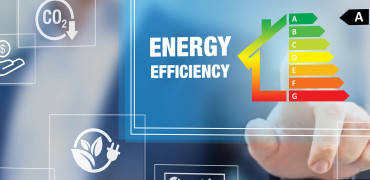I’ve just taken part in a fascinating roundtable that focused on the best ways of defining and verifying net zero, so that everyone involved with buildings is ‘singing off the same hymn sheet’ and we are all working to the same standard.
We hosted the event chaired by David Partridge from the UK Net Zero Carbon Buildings Standard, who we’ve previously interviewed in a podcast last November.
The roundtable brought together people from across the construction industry to discuss the value of a common standard and give feedback, so that the UK Net Zero Carbon Buildings Standard can help to drive market transformation.
The ultimate aim of this work is to enable our industry to robustly verify that all of our built assets are net zero carbon, in line with our nation’s climate targets.
Everyone needs to understand what net zero looks like and agree how this can be verified
A unifying standard
The UK Net Zero Carbon Buildings Standard, or ‘The Standard’ as it is known, is based on clear, consistent definitions and trajectories for net zero carbon buildings.
It provides a clear definition of net zero carbon for buildings or assets, and not for the companies that operate them. In this way, it offers a standard against which these buildings can be verified, which increases integrity and avoids greenwashing.
One of the remarkable things about The Standard is that it has been collaboratively created by the built environment industry, for the built environment industry and is not owned by any one organisation or Institute.
It has also been underpinned by different industry bodies, such as CIBSE, UK Green Building Council, LETI, RIBA, RICS, etc,
The Standard takes the best from each of these to build a common, verifiable standard that can inform investment decisions, sustainable finance and building operations.
This can then be used by policymakers at national, city and local level when they are looking at planning and building regulations.
No time to lose
Kicking off the meeting, David Partridge, Chairman of the Governance Board of the UK Net Zero Carbon Buildings Standard explained: “We need to address the climate challenge that we’ve got, but we can’t wait for legislation to do that for us, so we’re relying on the market to come together to deliver The Standard.”
David also talked about how important the roundtable was because it gives him and his board vital feedback from the people who will actually be using The Standard.
There’s already been an enormous amount of industry involvement in setting the technical aspects of The Standard which is important in helping it become something that is adopted by the whole real estate industry.
As David said to the meeting: “We need to ensure that the people who are using it are actually going to adopt it and so talking to them and explaining what we’re doing and inviting them to contribute is really important for us.”
Why we are involved
As a manufacturer of the energy-consuming equipment that keeps buildings comfortable places to live, rest and work all year round, Mitsubishi Electric is proud to be a Gold Sponsor of the UK Net Zero Carbon Buildings Standard, because we realise that we are essentially one piece of a giant puzzle.
Buildings are responsible for almost 40% of global carbon emissions, with the HVAC (Heating, Ventilation and Air Conditioning) equipment that we supply a major part of that jigsaw piece. How that equipment is designed, installed, commissioned and operated has a huge impact on a building’s carbon footprint so we need others to work with us and bring their expertise as well.
To solve the ‘puzzle’ and get to net zero, everyone needs to understand what net zero looks like for a building and agree how this can be checked and verified.
For me therefore, The Standard will act as a playbook and will benchmark what is expected from everyone involved with buildings.
It allows us to collectively define how we can all get to net zero, how we can ask for net zero from our supply chain, and most importantly how do we verify it thereafter?
Around the table
The event brought together people from across the construction industry with representatives from Mace, ISG, Qoda Consulting, BW, CBRE, Buro Happold, SOM, and Langham Estate.
Also taking part was Jennifer Kelly, Head of Sustainability for Chester Zoo, who summed up the views of the end user by explaining that The Standard is so important because: “it provides a common language for us to understand our own targets and a common language for us to talk to our suppliers and our consultants who work on our built infrastructure so that they understand what we’re aiming for.”
Jake Timothy-Dorward, from QODA Consulting felt that there would be: “a welcome response from the construction clients as it’s going to give them a clear framework and road map to get to these net zero carbon targets that their own clients are requesting.”
He also felt that it was important not to scaremonger but instead to give people access to something that’s deliverable across all types of projects, not just high-end projects.
“We’re often asked by clients how we can assist them to achieve their carbon goals,” explained Penny McCallum, from BW Workplace Experts. “For us a really important requirement is to be consistent in the industry because at the moment, there is no common standard. I think clients will react positively because they’re already asking what it is that they need to do to ensure that they can meet their net zero goals.”
Next steps
A lot of work has been done on the development of both the Governance and the technical fundamentals of The Standard and, whilst there is some work to be done defining the limits, there are plans to launch the Beta Test version this Spring.
We will be posting further details on The Standard as targets and limits are discussed and agreed within the industry.
In the meantime, we have created a short overview of the Roundtable which you can watch here.
You can also read about the podcast with David Partridge here:
Or Apple
Dan Smith is Sustainability and Construction Manager




